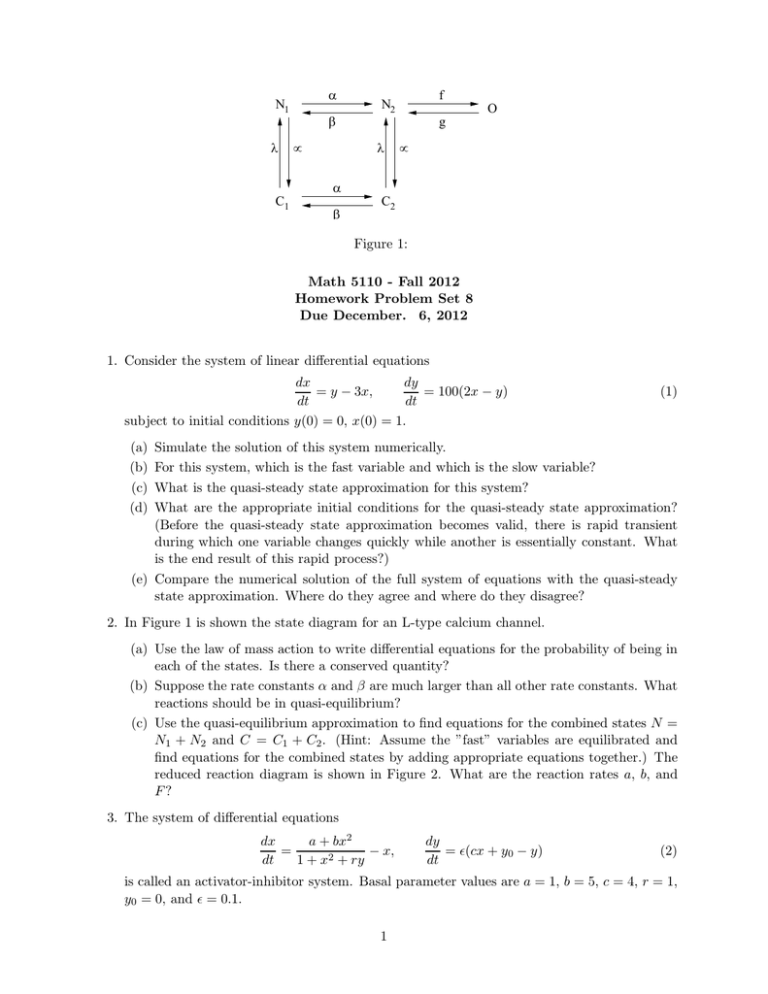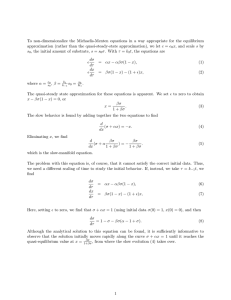Figure 1: Math 5110 - Fall 2012 Homework Problem Set 8 Due December.
advertisement

α N1 λ β µ f N2 O g λ µ α C1 β C2 Figure 1: Math 5110 - Fall 2012 Homework Problem Set 8 Due December. 6, 2012 1. Consider the system of linear differential equations dx dy = y − 3x, = 100(2x − y) dt dt subject to initial conditions y(0) = 0, x(0) = 1. (1) (a) (b) (c) (d) Simulate the solution of this system numerically. For this system, which is the fast variable and which is the slow variable? What is the quasi-steady state approximation for this system? What are the appropriate initial conditions for the quasi-steady state approximation? (Before the quasi-steady state approximation becomes valid, there is rapid transient during which one variable changes quickly while another is essentially constant. What is the end result of this rapid process?) (e) Compare the numerical solution of the full system of equations with the quasi-steady state approximation. Where do they agree and where do they disagree? 2. In Figure 1 is shown the state diagram for an L-type calcium channel. (a) Use the law of mass action to write differential equations for the probability of being in each of the states. Is there a conserved quantity? (b) Suppose the rate constants α and β are much larger than all other rate constants. What reactions should be in quasi-equilibrium? (c) Use the quasi-equilibrium approximation to find equations for the combined states N = N1 + N2 and C = C1 + C2 . (Hint: Assume the ”fast” variables are equilibrated and find equations for the combined states by adding appropriate equations together.) The reduced reaction diagram is shown in Figure 2. What are the reaction rates a, b, and F? 3. The system of differential equations a + bx2 dx = − x, dt 1 + x2 + ry dy = ǫ(cx + y0 − y) dt (2) is called an activator-inhibitor system. Basal parameter values are a = 1, b = 5, c = 4, r = 1, y0 = 0, and ǫ = 0.1. 1 F N O g b a C Figure 2: (a) Why is this called an activator-inhibitor system? (Which variable is an activator and which is an inhibitor?) (b) Draw a phase portrait for this system of equations. Find some typical trajectories using numerical simulation. (c) Which variable is a ”fast” variable and which is ”slow”? (d) Find the steady state solutions and their stability with c a parameter (not fixed). For what values of c are the eigenvalues purely imaginery? (Hint: Numerical estimates are sufficient here since analytical expressions are quite hard to find.) (e) With c and y0 as parameters that can be varied, how many qualitatively different phase portraits can you find? Sketch them. 2

